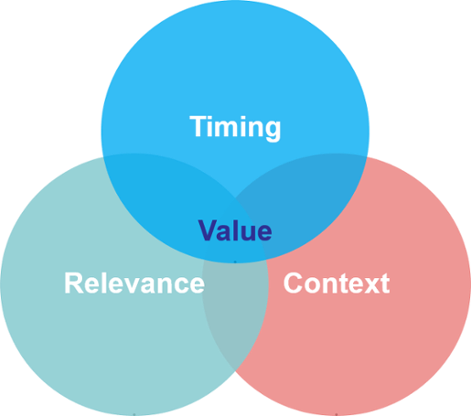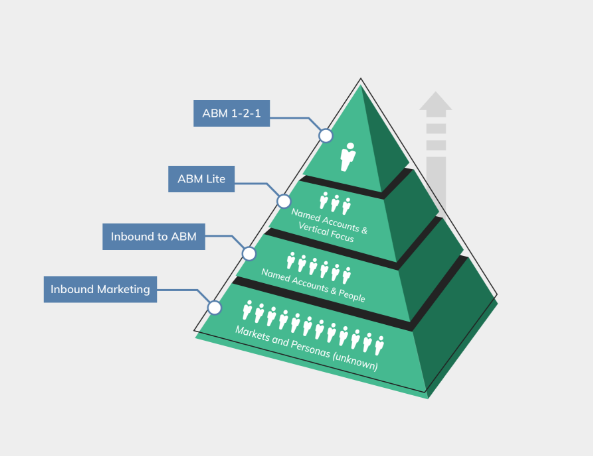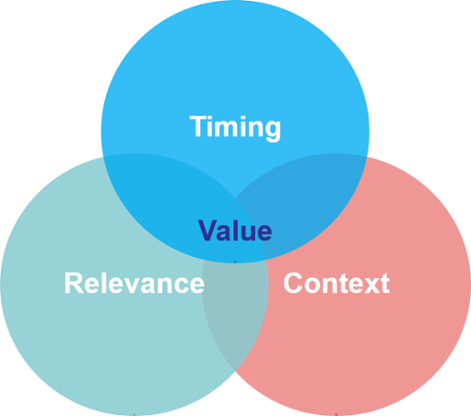Considering buying intent can transform marketing and sales strategies. Here we look at 3 steps to make the most of B2B intent data, considering context, timing and relevance.
Consider Buying Intent For Contextual, Relevant, Resonant Campaigns
For highly-targeted marketing and sales strategies such as inbound or Account-Based Marketing to be effective and resonant, they must be driven by accurate, intelligent insight.
Specifically in today’s digital landscape, having the right insight on buying intent is crucial to understand a target’s buying stage and context; allowing more accurate, precise (and effective) targeting across marketing and sales.
Considering that an average of only 5% (and as few as 2%) of target buyers are actively engaged in the buying process at any one time, adopting a behaviour-based, buying-intent driven approach is the logical answer to ensure you can reach the right buyers, at the right time, with the right contextual message.
Below, we outline a 3-step approach - considering Context, Timing and Relevance - that will help you identify your ‘active’ market, spot those critical customer buying signals and turn them to business advantage.
3 Steps To Make the Most of Intent Data: Context, Timing and Relevance
1. Context
Marketers have long been familiar with the concept of using keywords to identify audience segments that are actively talking about a given subject. But the information we get back can be misleading. Are your prospects talking about the subject positively or negatively? Is it one topic of many that your target is discussing? Are they talking about a current need, a future possibility, or a past event?
What traditional keyword research often lacks is context. Context helps you pick up on accurate behaviour signals – and helps you filter out the irrelevant noise.
Context can range from where your customers go to do their research, to what they’re researching, who with, how often, who or what is influencing them, or what clues are evident to suggest there may be an imminent need for your product – a specific problem being discussed, sales personnel being hired... the list goes on. In order to build the complete picture (of which any given keyword is only one small part) you need many different layers of insight. Each layer helps to tell the story that reveals the needs and interest areas that are relevant to your brand.

2. Timing
The closer to real-time that you can gather your insights the better. This gives you the opportunity to target your prospects at the precise moment they’re displaying relevant buying behaviour.
This also means you’ve got to be ready to act at a moment’s notice – and with the precise messaging that will be relevant to them depending on who they are and what stage of the buying process – awareness, consideration or evaluation - they’ve reached.
3. Relevance
Now you have established who is showing buying signals, where they are on the path to purchase and what are their current needs or issues, you can determine the precise messaging that will resonate best with each.
Depending on your strategy or resources, you can respond with the most suitable outreach for both you and your prospects.

For example in ABM, you may be targeting at a range of levels; from targeting individuals 1-to-1, targeting by organisation or vertical in a cluster, or targeting at a more inbound to ABM level. But with sufficient insight, you can ensure that your messaging, whether a subject line or deep webinar content, is hyper-relevant, informative, helpful and timely.
And, you can tailor your approach according to your prospects’ buying stage. At the awareness stage, it’s likely they’ll be looking to solve a business problem or meet a specific objective. Your content and messaging should not only reflect their needs and pain points, but also be relevant to the solution you can offer.
At the consideration stage, prospects will be exploring the options available to them. At this stage it’s your job to give them the tools and the evidence they need to create their business case.
When they come to decision-making, it’s time to incorporate your brand or product name and proof points to be sure you differentiate yourself from the competition.
Finally, you should bring the outcomes from each step together to help prioritise which contacts you target first and use these insights to tailor your approach. Remember that on average only 5% of your market is ‘active’ at any point in time, meaning that buying journeys will be starting and ending continually. That means it’s vital you approach your intent marketing with an always-on mindset.
Creating Greater Value Campaigns
With the level of insight that buying intent can provide, marketing and sales campaigns of all varieties can be more effective, efficient - and above all achieve greater relevancy, context, timing for enhanced value.
Image courtesy Cyance. Parts of this post were originally published here.






